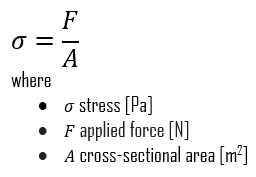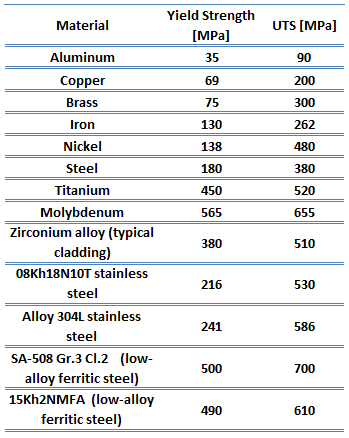 Tensile strength is measured in units of force per unit area. The unit is newton per square meter (N/m^2), kilogram (force) per square centimeter (kg/cm^2) or pascal.
Tensile strength is measured in units of force per unit area. The unit is newton per square meter (N/m^2), kilogram (force) per square centimeter (kg/cm^2) or pascal.
Most commonly used unit of strength is pascal, which is defined as force of 1N that is exerted on unit area.
- 1 Pascal = 1 N/m2
However, for most engineering problems it is fairly small unit, so it is convenient to work with multiples of the pascal: the GPa, and the MPa.
- 1 MPa 106 N/m2
- 1 GPa 109 N/m2
 The ultimate tensile strength (UTS) of a material is the force per unit area at which it breaks in two. Tensile stress is that type of stress in which the two sections of material on either side of a stress plane tend to pull apart or elongate. The capacity of a material or structure to withstand loads tending to elongate is known as ultimate tensile strength (UTS). Ultimate tensile strength is measured by the maximum stress that a material can withstand while being stretched or pulled before breaking. In the study of strength of materials, tensile strength, compressive strength, and shear strength can be analyzed independently. Because tensile and compressive loads produce stresses that act across a plane, in a direction perpendicular (normal) to the plane, tensile and compressive stresses are called normal stresses.
The ultimate tensile strength (UTS) of a material is the force per unit area at which it breaks in two. Tensile stress is that type of stress in which the two sections of material on either side of a stress plane tend to pull apart or elongate. The capacity of a material or structure to withstand loads tending to elongate is known as ultimate tensile strength (UTS). Ultimate tensile strength is measured by the maximum stress that a material can withstand while being stretched or pulled before breaking. In the study of strength of materials, tensile strength, compressive strength, and shear strength can be analyzed independently. Because tensile and compressive loads produce stresses that act across a plane, in a direction perpendicular (normal) to the plane, tensile and compressive stresses are called normal stresses.
We hope, this article, Unit of Strength of Materials, helps you. If so, give us a like in the sidebar. Main purpose of this website is to help the public to learn some interesting and important information about materials and their properties.